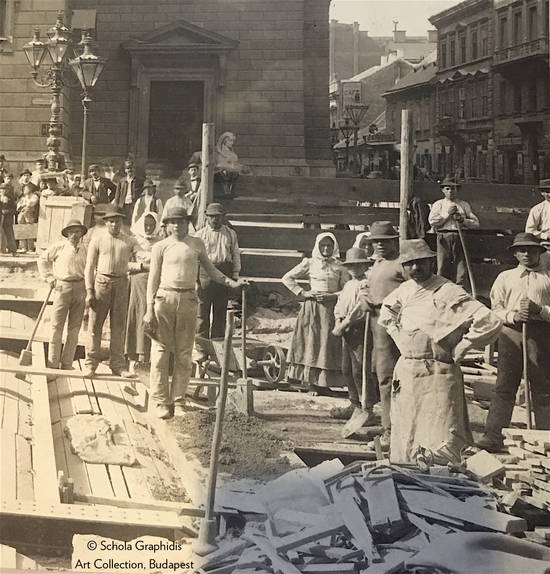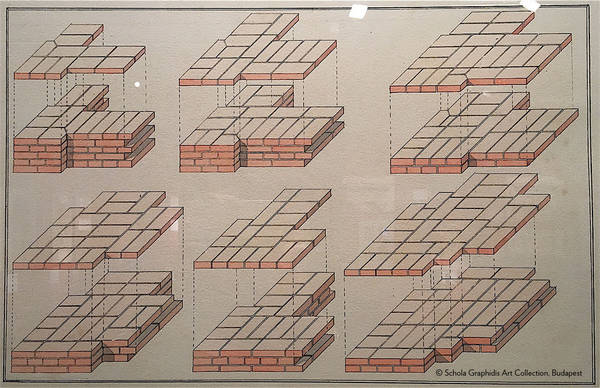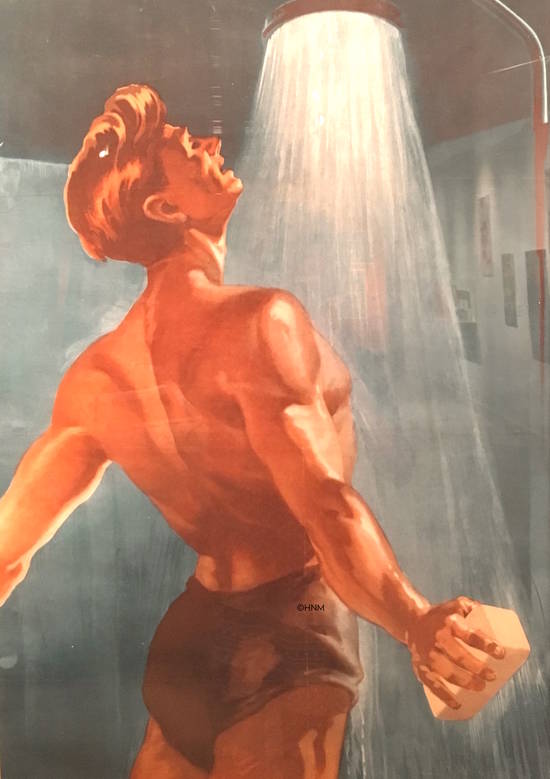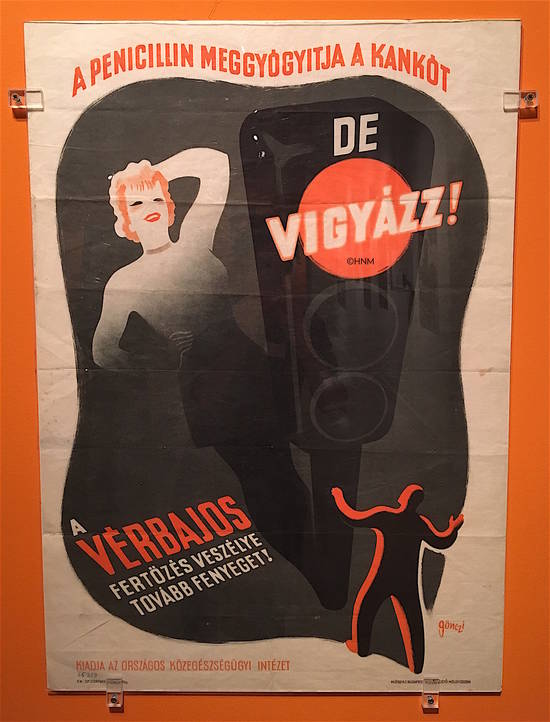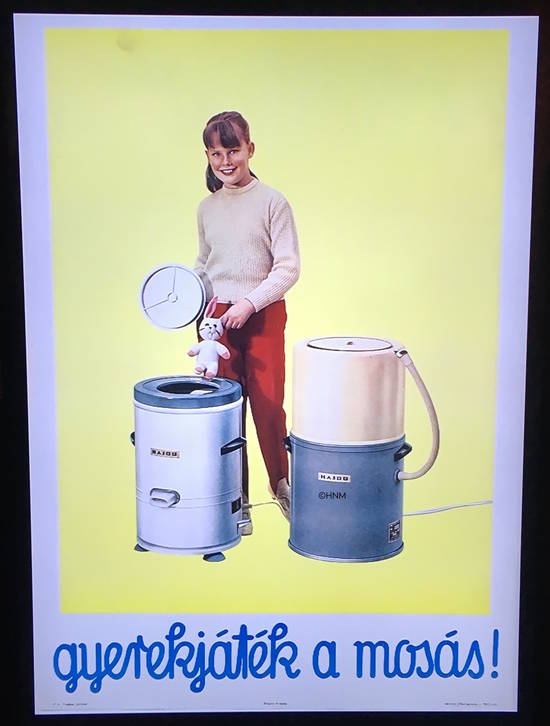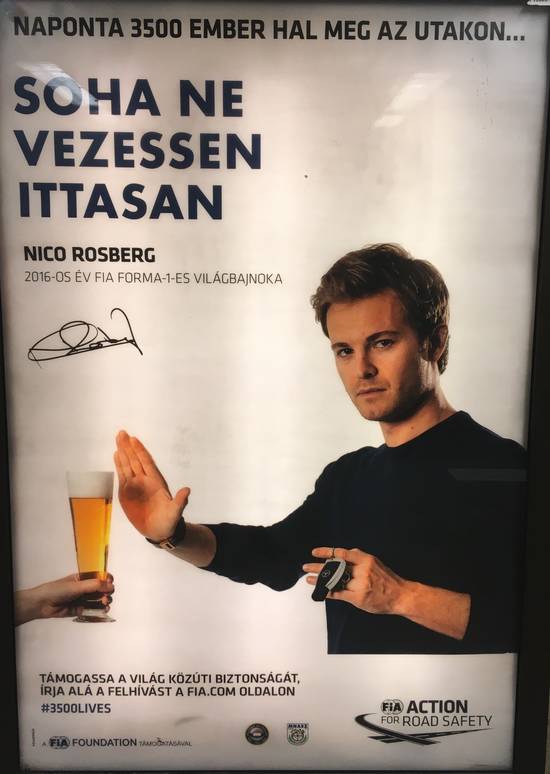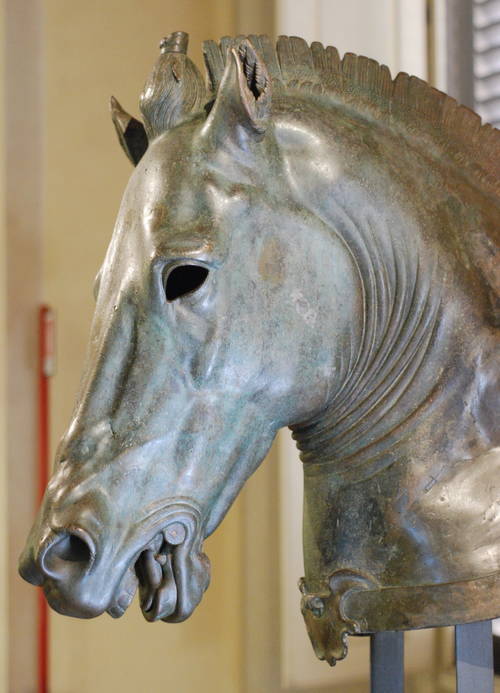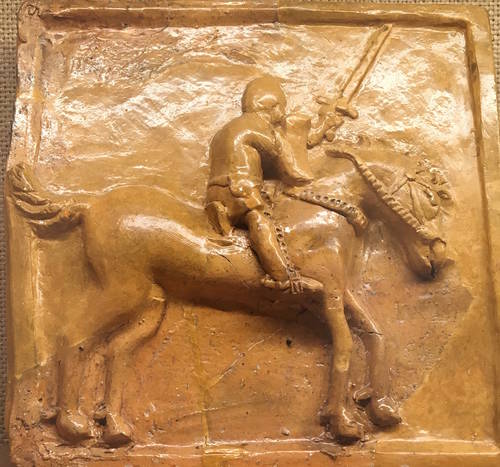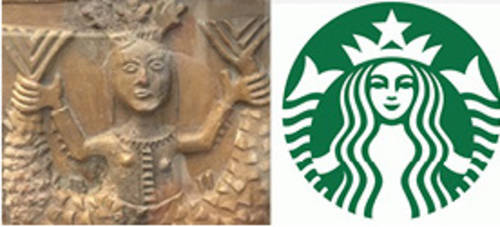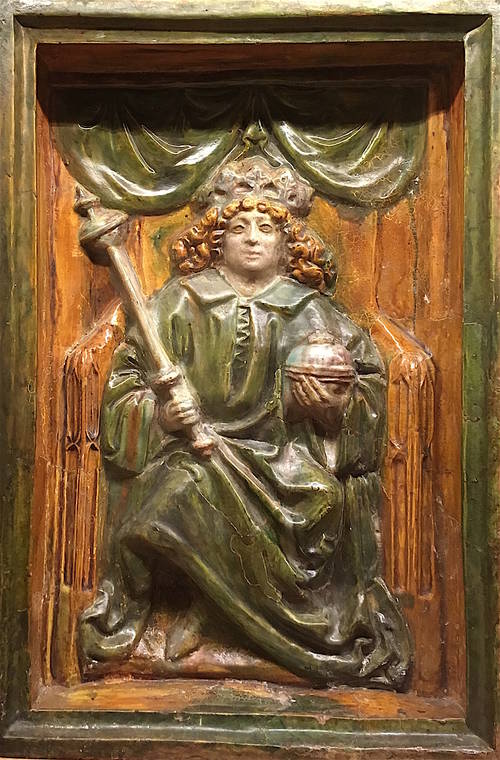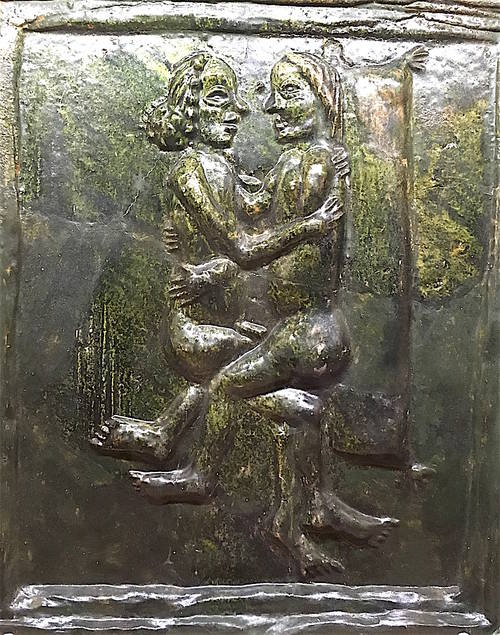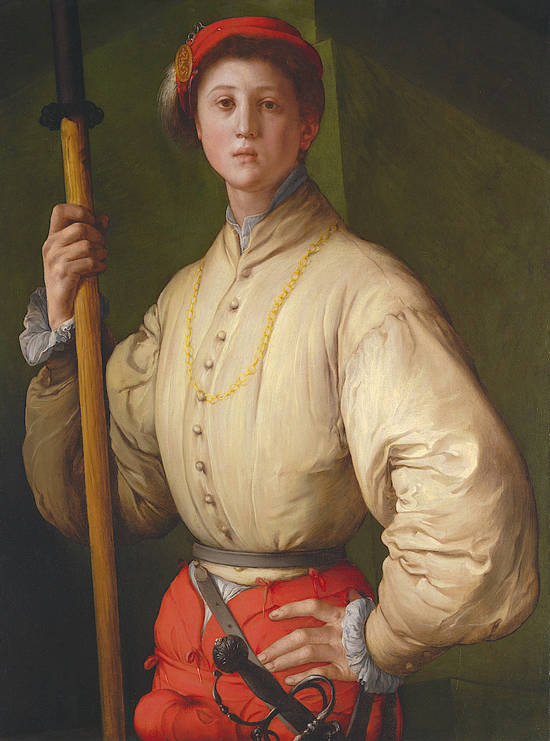
A tiny exhibition in Florence this summer, which is a joy to visit (Incontri miracolosi. Pontormo dal disegno alla pittura), is running at Palazzo Pitti. In just one room and with only ten works on show, it is curated by Bruce Edelstein (and is on view until 29th July).
Here you can ‘meet’ two masterpieces by Pontormo, arguably the best paintings he ever produced: the ‘Halbadier’ from the Getty and the Visitation from Carmignano just outside Florence. The ‘Halbadier’ is now almost universally accepted as being the portrait of Francesco Guardi, a young Florentine nobleman determined to defend Republican Florence in 1528, during the famous siege by the Imperial troops in alliance with the Pope against the Medici. We know from contemporary sources that there were many young men eager to volunteer in the defence of the city and that they dressed up for their role. Guardi is memorably depicted looking directly out of the painting, proudly flaunting his magnificent costume, in the red and white colours of Florence. A delicately painted gold chain hangs around his neck, and his hands are particularly memorable. The only known preparatory drawing for the work (from the Uffizi) in red chalk is displayed beside the painting.
The Visitation has been restored for this occasion and beside it is displayed the small squared drawing (preserved in the Uffizi) which Pontormo used in preparation for the larger work. The street scene in the background is now more visible where the tiny figures of Joseph and Zacharias await their spouses on the stone bench at the foot of a typical Florentine palace (the ass which has been discovered peering round the corner of the building is, however, almost impossible to see with the naked eye). But of course it is the four female figures who are the protagonists of the scene, in their magnificently coloured dresses. In the excellent catalogue the several mysteries attached to this work and much discussed by art historians over the decades seem to have been solved. The presence of two female figures who accompany Mary and Elizabeth at this touching moment (described in St Luke’s gospel) are convincingly explained by similar iconographic representations of this subject in both the mosaics in the Florence Baptistery and in Giotto’s frescoes in Padua, where two ‘handmaidens’ are present. The curator also reminds us that scenes of marriage or farewell were common in Roman times (with emphasis on the gestures of the protagonists), and artists in the 16th century would certainly have been familiar with Roman reliefs of this subject. The likely provenance of the work has also been revealed: a commission from the Pinadori for a family chapel in a church in Florence which might have been damaged during the siege and so was instead kept in the family’s residence. The work is only documented in the church at Carmignano from 1720 onwards. There is also a fascinating hypothesis that Bonaccorso Pinadori, who is known to have supplied pigments to Pontormo, could himself have ordered this work.
The third painting is the portrait of another young man in a red hat, identified here as Carlo Neroni, also evidently dressed for the siege (in grey and black silk) and in a similar pose as the ‘Halbadier’ and also with a dark green ground. It comes from a private collection in London and only appeared on the art market in 2008 (it was last mentioned in London in 1827). It is more harshly painted than the ‘Halbadier’ and many may dispute the attribution. But it is of great interest to see all these three works together, painted at the same period (1528–30), a time when Pontormo was the uncontested protagonist of Florentine painting (his master, Andrea del Sarto, died of the plague in 1530).
Pygmalion by Bronzino (from the Uffizi) is also present in the exhibition since it has convincingly been shown to have been the ‘cover’ of the ‘Halbadier’ (it would have been in a frame to fit the greater dimensions of Pontormo’s painting). In the catalogue it is explained that many paintings during this period were provided with protective covers, very few of which have survived (or been identified as such). The very unusual iconography of Bronzino’s work, showing Pygmalion kneeling before his statue which has come to life, while a bull is being sacrificed to Venus on the flaming altar behind, apparently alludes to Ovid’s tale.
As so often occurs on occasions of this sort, art historians depend heavily on Vasari’s famous work, the Lives of the Artists. It is fascinating that this great Florentine art historian, who was also an architect (he built the Uffizi) and painter, remains such a fundamental source for our knowledge of painting throughout the 15th and early 16th centuries. Much is made of the fact that Pontormo, who was Vasari’s contemporary, was omitted from the first edition of the Lives and only included in the second edition of 1568 (on display). Also it is a mystery why Vasari never mentions the Visitation, whereas he does document two portraits by Pontormo of young men during the siege (identified with the two portraits on show), and even mentions the fact that Bronzino had provided a cover depicting Pygmalian for Pontormo’s portrait of Guardi. The curator suggests this omissis may well have been because the Visitation was destined for a church just outside Florence’s city walls which might have been damaged (or threatened) during the siege meaning that at the last moment the painting was not installed, so Vasari would not have seeen it.
Another work by Bronzino, his Martyrdom of St Acacius of Ararat (an apocryphal story of a Roman in command of ten thousand soldiers who were martyred on Mt Arrat), is present in the exhibition not only because Bronzino was so close to Pontormo (and Pontormo apparently provided the cartoon for this work) but also because the background appears to have been ‘inspired’ by the destruction in the countryside around Florence to which Bronzino could have been an eye-witness (the painting dates from 1529–30 and is owned by the Uffizi). Pontormo also painted a work of the same subject (usually called the Eleven Thousand Martyrs) which hangs a few rooms away in the Pitti. Bronzino is also remembered for the design he provided to Jan Rost when he arrived from the Netherlands to establish the Medici tapestry manufactory for Cosimo I: the small and very well-preserved tapestry hung here representing Justice Liberating Innocence was made by Rost to demonstrate his skills in order to win his position. Although excluded from the catalogue, it gives us a taste of what lies hidden in the tapestry deposits of Palazzo Pitti, perhaps destined to be dusted off and given more importance in the future.
So this tiny exhibition, in the Sala delle Nicchie of the Palatina Gallery (which you can reach directly from the top of the stairs on the piano nobile) is a demonstration of the extremely high quality of the recent exhibitions, both large and small, in the Pitti and Uffizi. Exhibitions which involve serious academic research but which also provide the visitor with the chance to see great masterpieces from elsewhere (The ‘Halbadier’ was last in Florence 20 years ago; for anyone interested in this painter, this is an occasion not to be missed).
Reviewed by Alta Macadam, author of Blue Guide Florence.
NB: Another magnificent exhibition, this one on a very large scale, has just opened at the Uffizi and the Bargello: Florence and Islam (running until 23rd September). It will be reviewed here soon.







